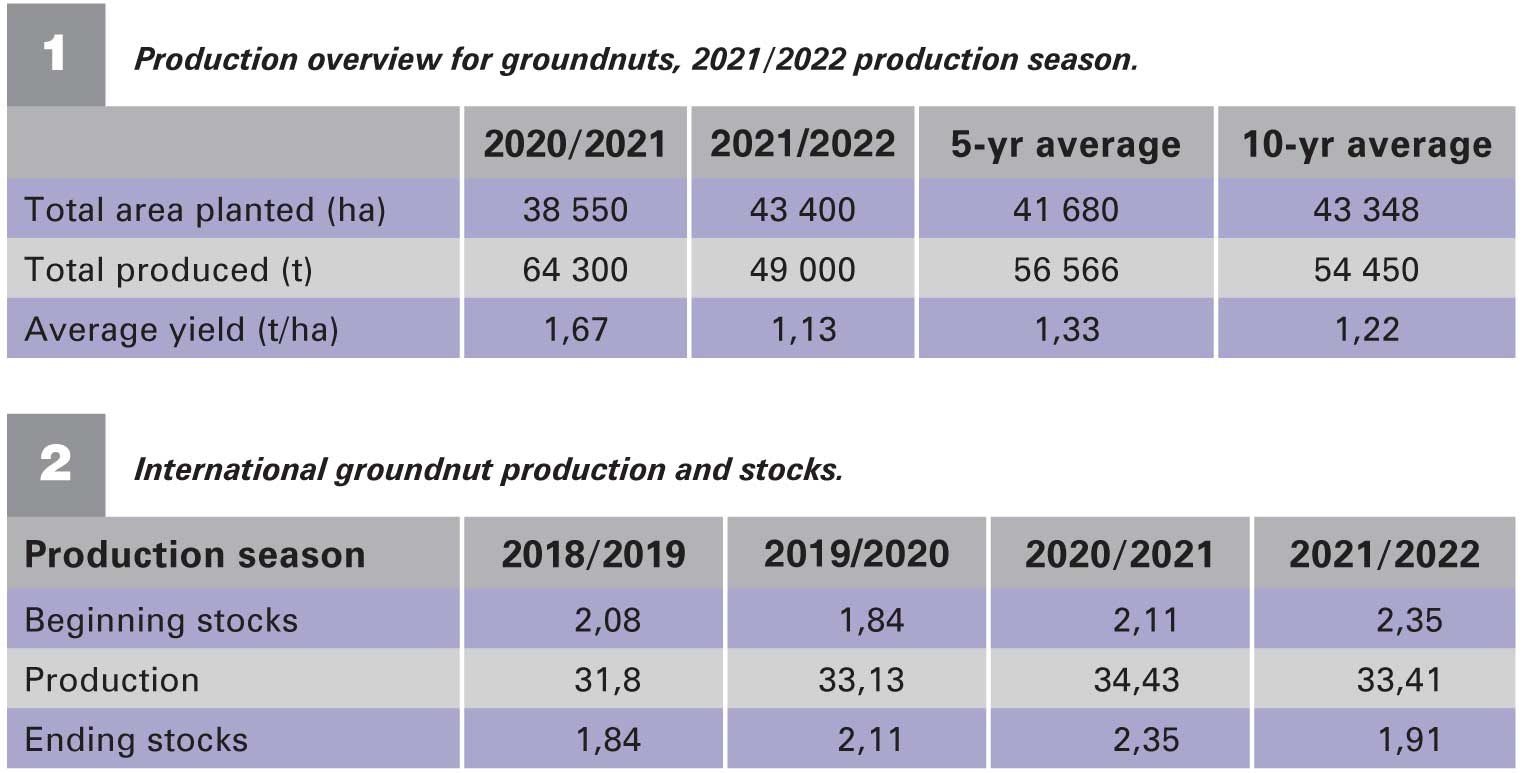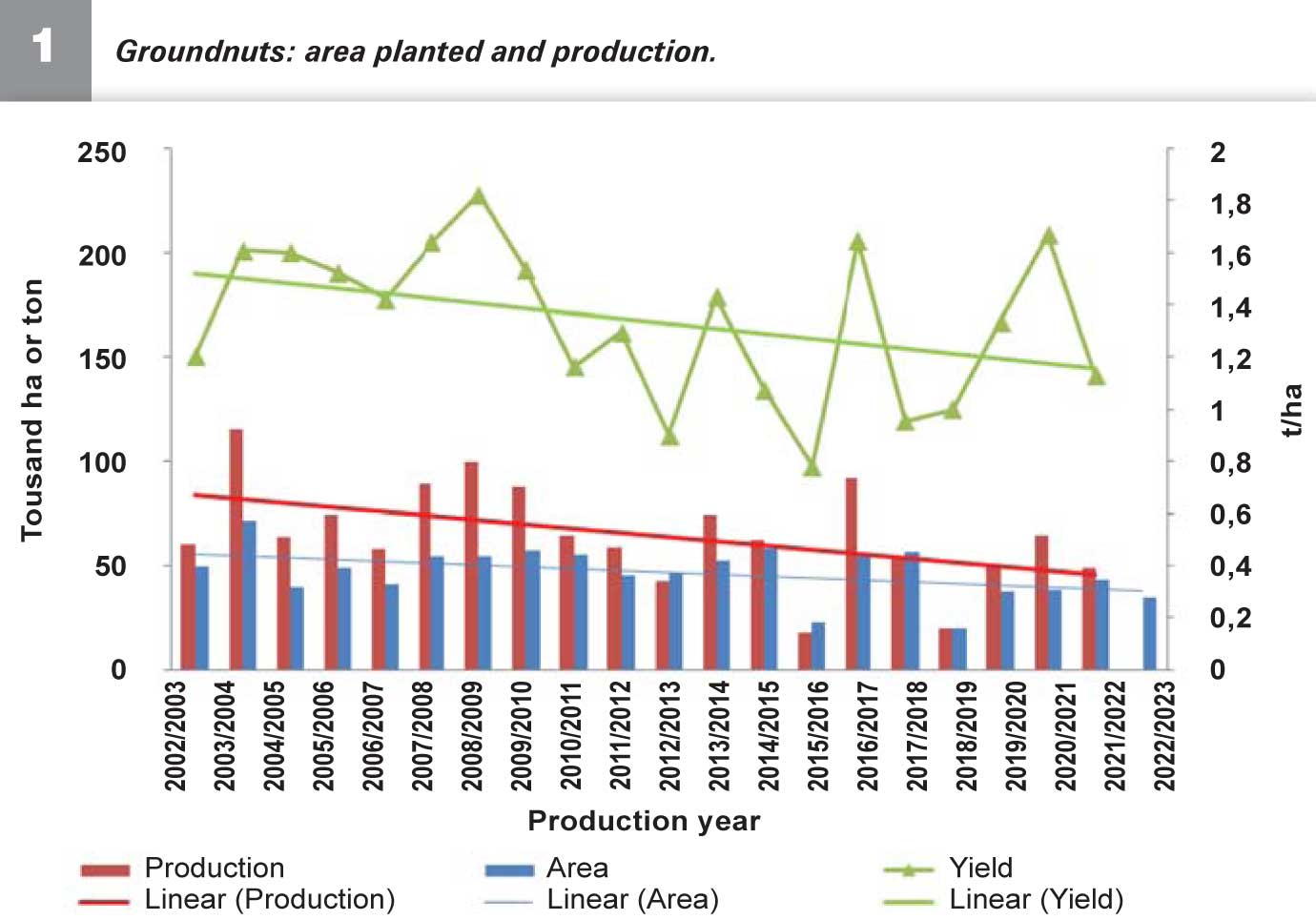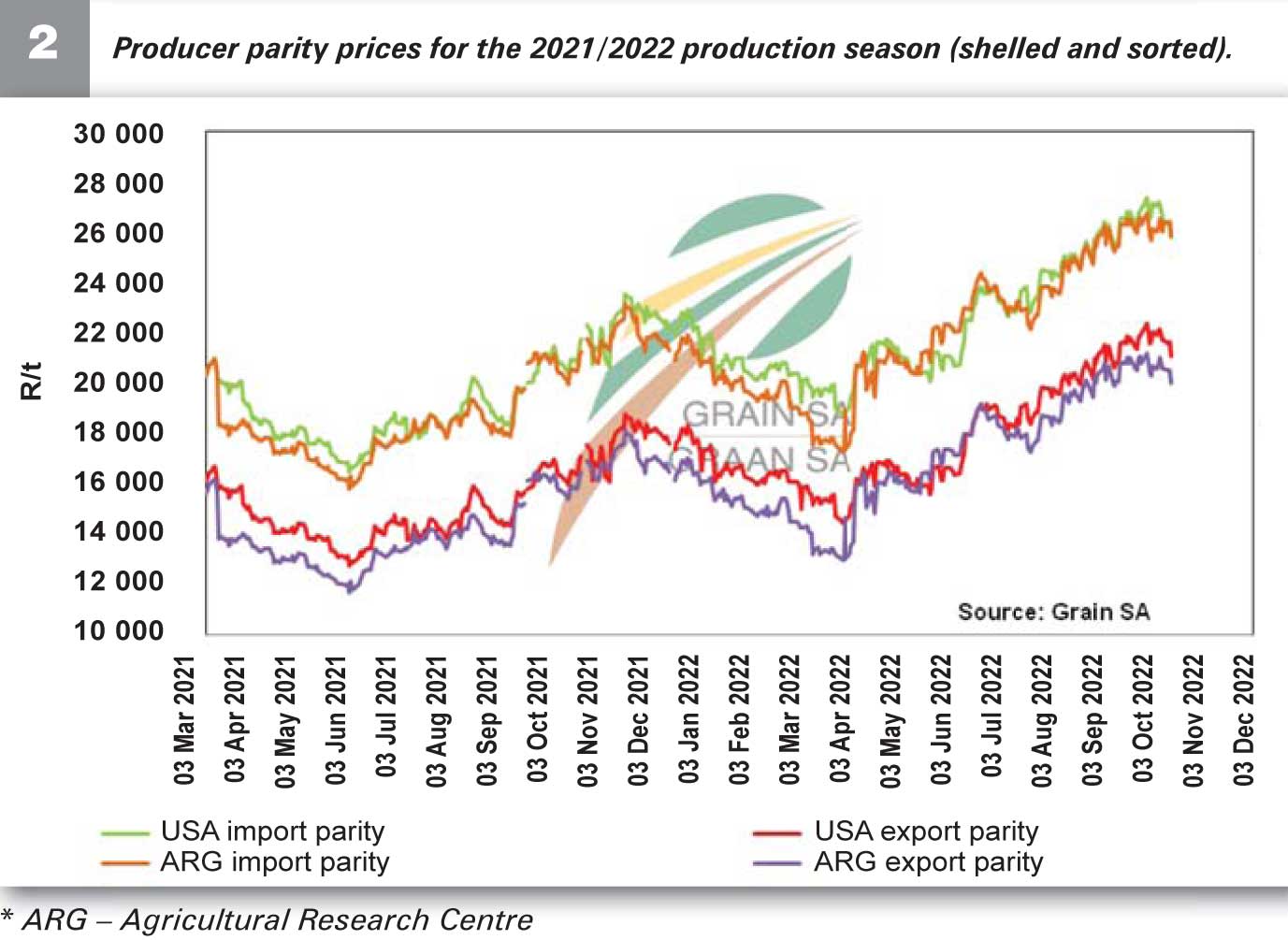March 2023
| CHRISTIAAN VERCUEIL, JUNIOR AGRICULTURAL ECONOMIST, GRAIN SA |
 |
The 2021/2022 groundnut production season was not without challenges. Wet conditions in critical phases of a groundnut's growing period caused a lot of damage to production and made the harvesting of groundnuts very difficult. These factors have negatively affected the profitability of groundnuts.
It must also be taken into account that a crop such as soybeans is easier harvested, and that the soybean price formation is more transparent than that of groundnuts. Therefore, in the first intentions to plant released by the Crop Estimate Committee (CEC) for the 2022/2023 season, there was a 20,5% decrease in intended groundnut hectares.
Table 1 shows the production overview for groundnuts in the 2021/2022 production season. The trend where groundnut hectares are decreasing is not a new phenomenon. South Africa was once a major producer of groundnuts and planted a record number of 393 000 hectares in the 1969/1970 production season. From the 2002/2003 season, hectares planted, production and yield are on a downward trend.
On the international stage (Table 2), groundnuts is experiencing loss of hectares planted due to profitability and the simplicity of competitive crops. International parity prices are currently at very high levels due to smaller expected groundnut production and lower international supplies.



CONCLUSION
Publication: March 2023
Section: Pula/Imvula